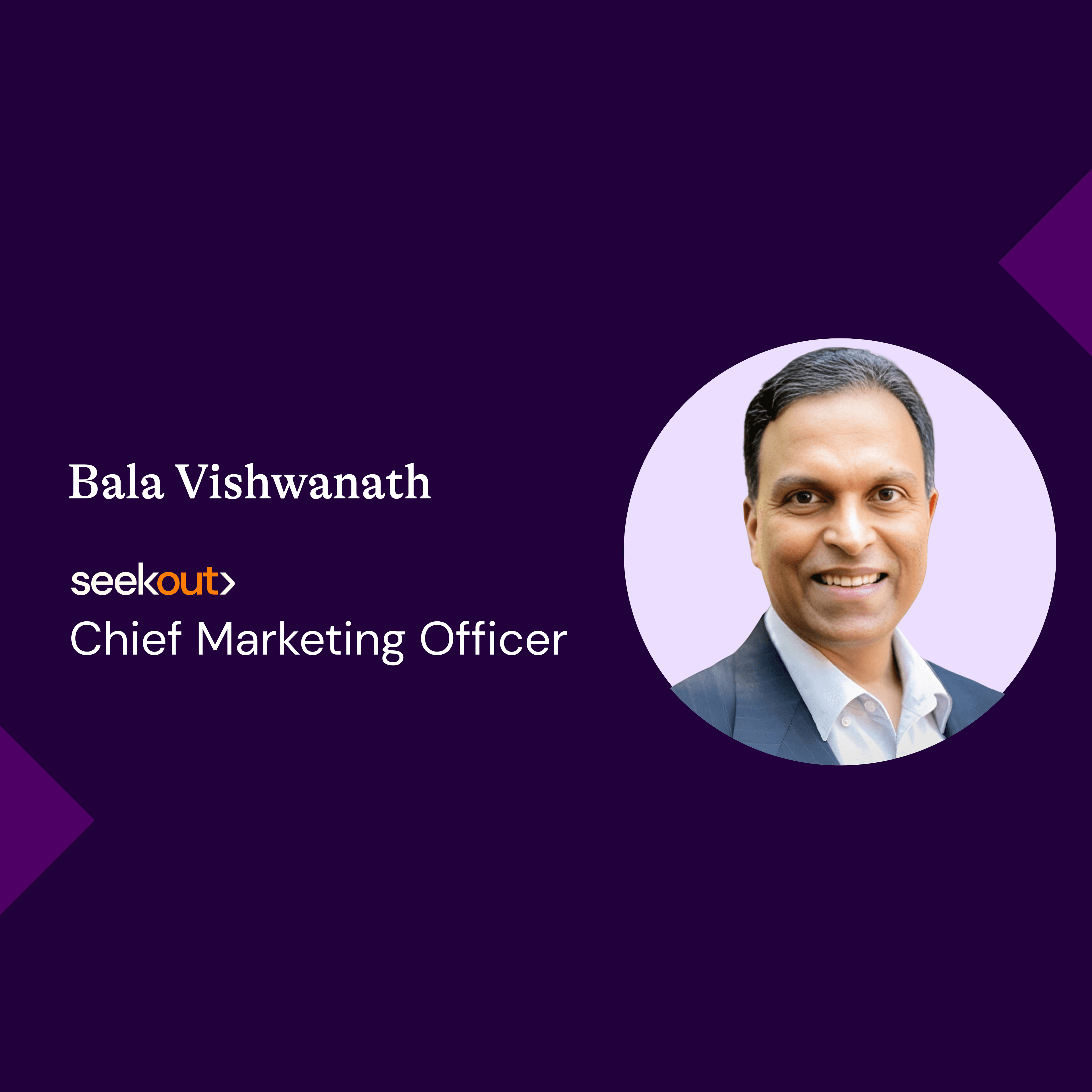
Back to blogs
In today’s AI and machine learning climate, data-rich hiring tools have become so ubiquitous that organizations are re-evaluating how their recruiters can impact the business’s bottom line. Recruiters are now leading data-driven recruitment strategies, and those who understand how to gather, interpret, and communicate data to stakeholders have positioned themselves as indispensable advisors who build successful teams for immediate and long-term needs.
Simply put, harnessing the power of data will give you a competitive advantage as a recruiter—and help talent leaders prove their impact on the business.
Ahead, we’ll look at the benefits of data-driven recruiting to the talent function, why data literacy is a non-negotiable skill for recruiters today, and how data can be leveraged to find highly qualified candidates and improve hiring processes.
What is data-driven recruitment?
Data-driven recruitment is the use of data to make objective, evidence-based decisions when developing strategies with hiring managers and leadership. Recruiters with a firm grasp of data know how to ask the right questions, how to tell the story of any talent pool, and can compellingly advocate for solutions. Recruiters also use data to ensure they meet department benchmarks and identify where improvements can be made throughout the hiring process.

The most effective recruiters understand they can’t secure themselves as talent advisors to their organization without mastering data literacy. With data and analytics tools, recruiters can confidently advise stakeholders and provide actionable insights into talent problems that are based on facts, not intuition.
What type of data can be used in recruiting?
Recruiters can access a wide range of data about their candidates, talent pools, and hiring processes to strengthen talent strategies. Some common examples used in data-driven recruitment include:
Candidate data
Candidate data can include employment history, job titles, skills, and certifications. Talent platforms allow you to apply filters and interactive visualizations to gain a deep understanding of the candidates you source.
Internal candidate data
Data-driven recruitment strategies aren't complete without a holistic view of your existing workforce, including employees’ work history, skills, and career goals. Employee data can be used to map internal mobility opportunities, improve retention, and build long-term strategies that fill skills gaps across your organization.

Suggested reading: Keep Your Best Talent 7 Strategies to Drive Internal Mobility
Competitor data
You can analyze your competitors’ workforce, including where their employees are located and the skills they have. These insights identify talent gaps in your organization and can help you create targeted outreach messages to passive candidates that encourage responses.
Diversity data
In the last several years, organizations have increasingly pledged to improve their DEIB (diversity, equity, inclusion, and belonging) efforts. However, many are unable to reach their goals because they don’t have access to quality data. Diversity recruiting tools provide the data needed to find underrepresented candidates to improve representation across talent pools.

Data can include race, gender, location, employment history, job titles, skills, and education. Building a diverse pipeline of candidates can be challenging because people don’t typically list their diversity status online. But AI talent tools like SeekOut can identify diversity insights of a candidate based on inferences made using machine learning classifiers.
Recruiting funnel data
Data is a concrete way for talent teams to spot where pain points arise throughout the recruiting funnel. It also helps teams understand whether they’re meeting important metrics that prove to leadership how the talent acquisition function is directly impacting business objectives.
Recruiting metrics vary by teams, but a few common ones include:
Time to hire. This metric illustrates the number of days between when the candidate enters the pipeline (application or outreach) and when an offer is accepted. Teams can understand how quickly they select and hire the best candidates.
Velocity. This metric ensures that organizations are providing quality candidate experiences by measuring how long a candidate sits in each stage of the funnel. For example, if a candidate hasn’t been moved to a meeting with the hiring manager after a few weeks, the candidate’s interest in the position can wane.
Conversion ratios. This metric points to the effectiveness of each stage of the funnel and the quality of candidates selected. For example, how many applicants are moved from the recruiter screening to the hiring manager screening? Or for every person who interviews, how many are getting an offer?
How do you gather recruiting data?
Talent teams have difficulty harnessing the benefits of recruitment data because data is unstructured and scattered across different tools, such as their HRIS, ATS, LMS, LinkedIn, and GitHub. However, recruiting teams can typically find most of the data they need from two main sources:
Applicant Tracking System (ATS). Recruiters can access data about their candidates, such as how they’re progressing through different stages of the interviewing process.
Talent intelligence platforms. Recruiters can find data about talent pools, competitor landscapes, and diverse representation across candidates. These tools can aggregate information from publicly available data sources, such as GitHub.
A simple fix to unite all this data is by integrating these systems with one another. Not only will you be able to access the data you need in one place, but you’ll also increase the value you get from each of these tools.

Suggested reading: 4 Greatest Advantages of Integrating Your Recruiting Tech Stack
For example, you could connect your ATS to a platform like SeekOut to find and engage qualified talent faster. SeekOut matches keywords with adjacent and inferred phrases to provide highly relevant searches with visual indicators within the profile as to why a candidate is relevant. Integrating SeekOut lets you create profiles in your ATS—complete with contact information, education, and work history—without switching between systems or manually entering candidate data.
The benefits of data-driven recruitment to talent strategies
Understanding how to gather, interpret, and provide actionable insights using data is so essential to today's recruiting process that an organization’s talent goals cannot be realized without it.
Some benefits of data-driven recruitment include:
Developing hiring strategies that drive results
Data and analytics tools help talent teams guide their organization’s hiring strategy based on facts. Recruiters can confidently develop strategies by gathering information about candidates, talent pools, and competitors and interpret that data into next steps.
For example, say your organization is keen on opening a second office in a nearby city for its engineering needs. Recruiters can use data analytics tools to determine which cities have the greatest concentration of qualified engineers to help them quickly build a team.
Strengthen relationships with hiring managers
Before data and analytics tools were as readily available as they are today, recruiters could only be “order takers” with a hiring manager and focus on gathering as many candidates as possible. However, recruiters can now prove they're capable of so much more because data allows them to source only the most highly qualified candidates.
Redefining the Role of the Recruiter: From Sourcing Expert to Talent Advisor
Download the reportFor example, recruiters can take the guesswork out of building an ideal candidate profile. It’s common for hiring managers to step into strategy meetings with a long list of excessive candidate criteria. Recruiters can use data to narrow the focus and set expectations with hiring managers to show them what type of talent is available.
Improve the quality of candidates
Recruitment data can be used to locate candidates who best match your role requirements, uncover qualified candidates with adjacent skills, and even surface candidates with niche expertise or hard-to-find certifications.
While you could look for candidate data across multiple sources online, talent intelligence platforms aggregate this data into one searchable database. These platforms may also use AI to infer qualifications that candidates don’t commonly advertise on public profiles, such as security clearances when searching for cleared talent.
Identify where processes can be improved
Data can help your team answer questions, such as:
Have our diversity recruiting efforts improved over the last year?
How long does it take to send an offer to a candidate?
How much time does it take us to reply to candidates?
Tracking the progress of your team’s hiring efforts is nearly impossible without tools to help you gather and interpret this data.

For example, Seekout’s Pipeline Insights gives teams end-to-end visibility into metrics such as candidate diversity, conversion, and volume with the ability to dive deeper by department, recruiter, source, hiring manager, and more to understand your team’s past performance. You’ll easily spot where bottlenecks arise throughout the process and make informed decisions on how to remove them.
Boost productivity
Data and analytics tools enable you to work more efficiently by removing a bulk of manual processes that would take up hours of your time. For example, you can build a list of qualified candidates faster by reaching out to previous applicants who are already in your database. SeekOut’s Talent Rediscovery feature connects to your ATS to surface those candidates instantly. The feature also aggregates data on those applicants to help you answer questions such as “Where are the candidates who declined our offers now working?”

By having instant access to warm candidates and silver medalists, you can reduce the time spent mining for qualified candidates to present to hiring managers and increase the probability of a faster hire.
Impact the bottom line
The best way to capture business stakeholders’ attention is to speak their language and demonstrate how human capital decisions will influence business outcomes. Every business problem boils down to a talent challenge, and using tools to show the efficiency and effectiveness of data-driven recruitment strategies will support business agility and build confidence in the organization’s future.
The path to a data-driven recruitment strategy with SeekOut
Realizing the full benefits of data-driven recruitment is so much easier when you're set up with the right tools. Integrate SeekOut with your ATS to achieve your talent goals and solidify your role as a strategic advisor to your organization.
Some features include:
Applicant Review: Match applicants across job requirements in minutes and get insight into your talent pools with intelligent automation.
Pipeline Insights. Get data-driven, end-to-end visibility that focuses your team’s recruiting efforts and improves your chances of landing top candidates.
Talent Rediscovery. Keep track of past candidates in your ATS with profiles that automatically update with their latest experience, place of employment, contact information, and more.
Learn more about the benefits of integrating your tech stack with SeekOut by scheduling a personalized demo.
See us in action
Learn how SeekOut unifies people data to help organizations reach their talent goals
Request a demo




